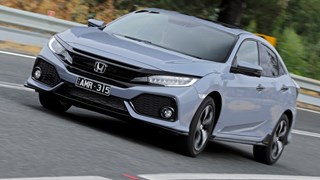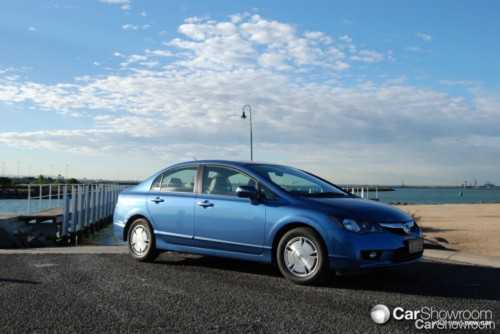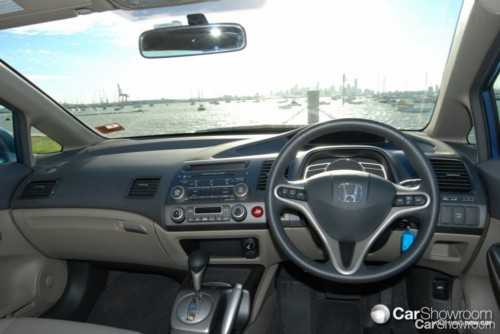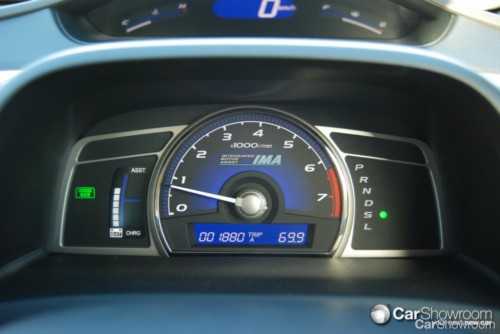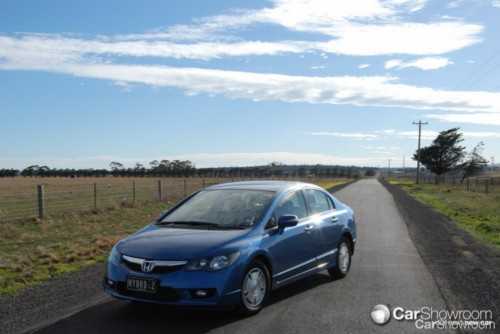Sharply-priced and Economical To Run
We all know that Taxi drivers like to keep a sharp eye on automotive costs and with the first Honda’s Civic Hybrid now being used as a taxi in Melbourne, it’s not only a greener choice you can bet it’s an economical one too.
Retailing at $35,990, the 1.3-litre petrol-electric Civic is sharply priced and also cheap to run – average fuel consumption is just 4.6l/100kms. Offering levels of equipment similar to the Civic VTi-L model, the Hybrid version delivers a comprehensively equipped vehicle that’s perfectly suitable for private and commercial buyers.
What You Get
Honda’s Civic range has been a long-term favourite small car – both hatch and sedan - with the Car Showroom team. We like the sedan’s contemporary styling, well-appointed interior and it’s great to drive.
After a week behind the wheel of a Hybrid Civic we reckon this is a vehicle anyone in the market for a small, sedan should consider. Like the Toyota Prius, the Civic Hybrid is right for our times – the Honda voted the ‘greenest’ car sold in both England and Germany.
Buyers needn’t be conscious of the Hybrid technology – day-to-day operation is just like a conventional petrol vehicle. Performance and on-road dynamics are also impressive.
Inside is the usual well-appointed and comfortable Civic sedan with just the Integrated Motor Assist (IMA) information on the dashboard providing a clue that an electric motor sits under the bonnet along with the petrol engine.
Under The Hood
The 1.3-litre VTEC petrol engine and Nickel-Metal Hydride (NiMH) battery-powered electric motor combine to provide the Civic Hybrid 85kW of power and 170Nm of torque. Drive is to the front wheels via Honda’s continuously variable transmission (CVT).
Up to 40km/h, the Civic Hybrid is propelled exclusively by electric power. Honda calls the system Integrated Motor Assist (IMA).
Under acceleration the petrol engine works in tandem with the electric motor. At cruise, depending on the conditions, the petrol engine and/or the electric motor propel the vehicle.
During braking, the petrol engine shuts down and the electric motor acts as a generator to charge the battery pack. When stopped, the petrol engine enters an idle stop mode to save fuel and reduce emissions – the engine restarts when the brake pedal is released.
The current fourth generation Civic Hybrid uses a three-stage i-VTEC single overhead camshaft valve control system (previous models were two-stage). This system provides normal valve timing, high output valve timing and cylinder idling functions to provide lower fuel consumption, greater power and enhanced electrical regeneration capabilities.
Civic Hybrid’s electric motor, which also acts as an electric generator, is attached directly to the crankshaft of the petrol engine. It is an ultra-thin (70mm) brushless DC electric motor and is mounted between the petrol engine and the transmission.
The electric motor is regulated by an Intelligent Power Unit (IPU) that stores electric power in a compact battery box and controls the flow of electricity to and from the electric motor.
The IPU consist of the Power Control unit (PCU), a rechargeable Nickel Metal-Hydride battery module and an integrated cooling unit. A total of 132 1.2-volt battery units store up to 158 volts of electrical energy. A new Panasonic dual module casing is lighter and more efficient than in the previous Civic Hybrid.
The fourth generation electric motor provides 15kW of power and 89Nm of torque.
The Interior
Civic’s two-tier dashboard has not received universal praise. We like it with important information (speedometer, fuel gauge and engine temperature) displayed on the upper readout and secondary information included in the lower panel.
Like Toyota’s Prius, the Civic becomes a test for drivers to maximize their fuel efficiency. The dashboard graphics show in vertical white bars ‘Assist’ which means (under acceleration) you’re consuming power and in green bars ‘Charge’ which means (under trailing throttle or braking) you’re producing power.
When stationary, a green flashing light confirms you are in ‘Auto-Stop’ mode and the petrol engine is shut down.
Otherwise, it’s the VTi-L model Civic – in-dash 6 stack CD with MP3 compatibility, auxiliary jack and steering wheel controls, nice seats, tilt and telescopic steering wheel adjustment and quality materials.
Front, side and curtain airbags are standard, along with ABS anti-lock brakes with Electronic Brakeforce Distribution and Brake Assist.
Exterior & Styling
We’re fans of the Civic’s styling – it’s certainly modern but doesn’t polarize opinions. Certainly the deeply sculptured front end is more adventurous than the rather conventional rear end (improved rear lights were included in the recent upgrades).
The wide-opening rear doors provide excellent access to the rear seat.
On The Road
All over the planet, automotive engineers and journalists point to hybrids as the future for the industry (they debate whether the conventional engine should be diesel or petrol). Accepting that, if vehicles like the Honda Civic Hybrid continue to be fast-tracked, the future is bright.
In virtually all conditions, this Hybrid drove just like a conventional petrol car. Ride and handling over our high-speed test route was precise and refined and acceleration around town and in rural settings was just as you would expect from a 1.3-litre Civic (petrol-only models are powered by a 1.8-litre engine).
One difference – when crawling in city traffic and in carparks the Civic Hybrid propels you in silence as the electric motor is working exclusively.
Challenges
When the petrol engine shuts down - just before you stop completely – power assistance to the brakes ceases and more pedal pressure is required to maintain the rate of retardation. You soon get used to the sensation and anticipate it.
Similarly, there is just a slight pause when you take-off while the powerplants get themselves organized.
The Toyota Prius has similar characteristics…it’s a hybrid thing.
Verdict
We love our high performance sports cars and luxury SUVs as much as anybody, but the reality is hybrid motoring is the automotive future and it’s here right now. We would happily drive the Civic Hybrid every day. It’s kind to the planet and wallet-friendly, but its driving dynamics, comfort and convenience are everything you expect from a Honda Civic.
Same for the build quality – typical Honda and that means ‘Top-Shelf’.
The Competition
Has to be the Prius.
Toyota’s Prius II will set you back $37,400 or $46,900 for the Prius I-Tech. That’s a bit more coin than the Civic but fuel economy for the Prius is marginally better (3.9l/100kms V 4.6l/100km).
Thumbs-up:
build quality, fuel economy, comfortable driving dynamics
Thumbs-down:
slight lag upon take-off
